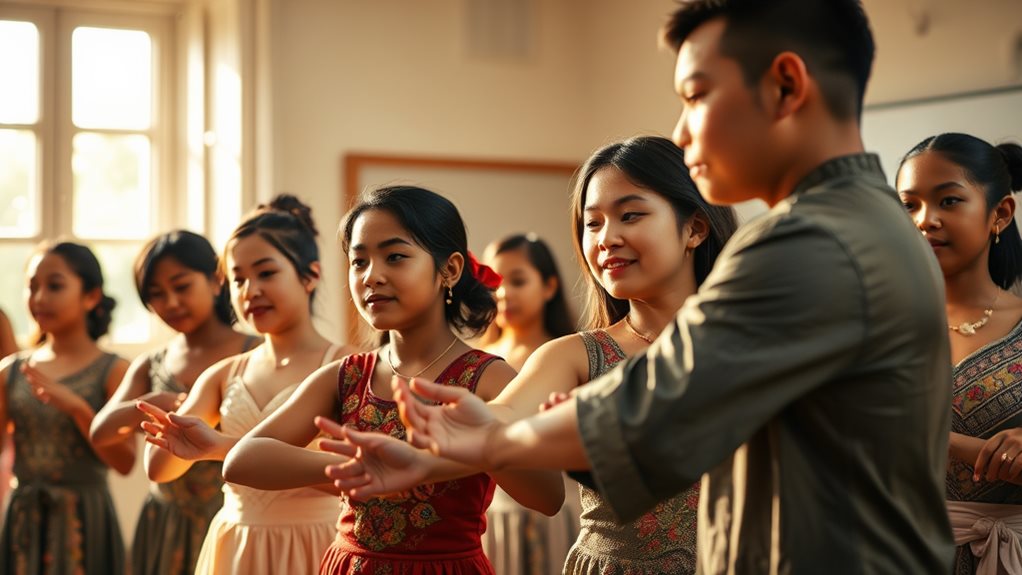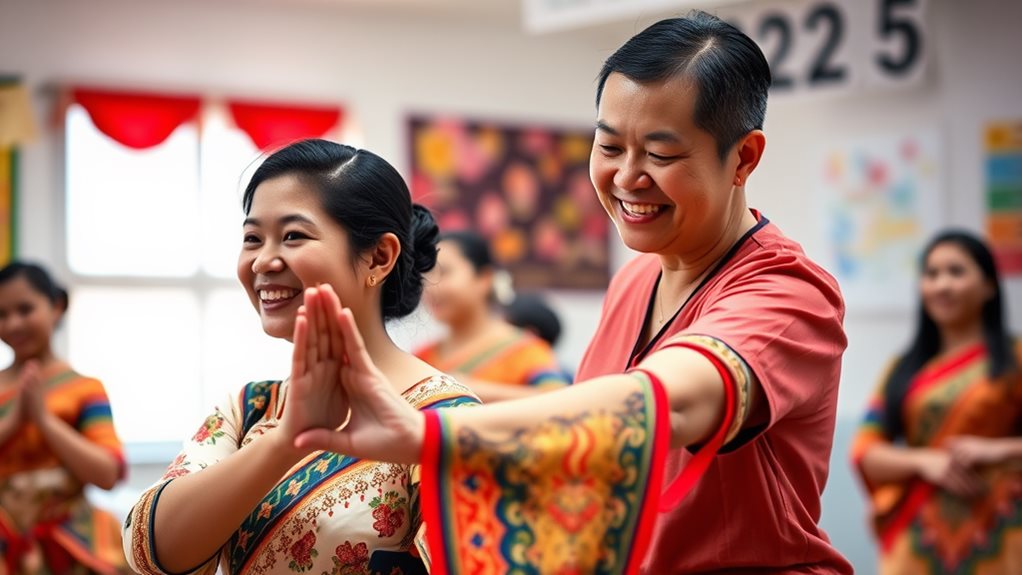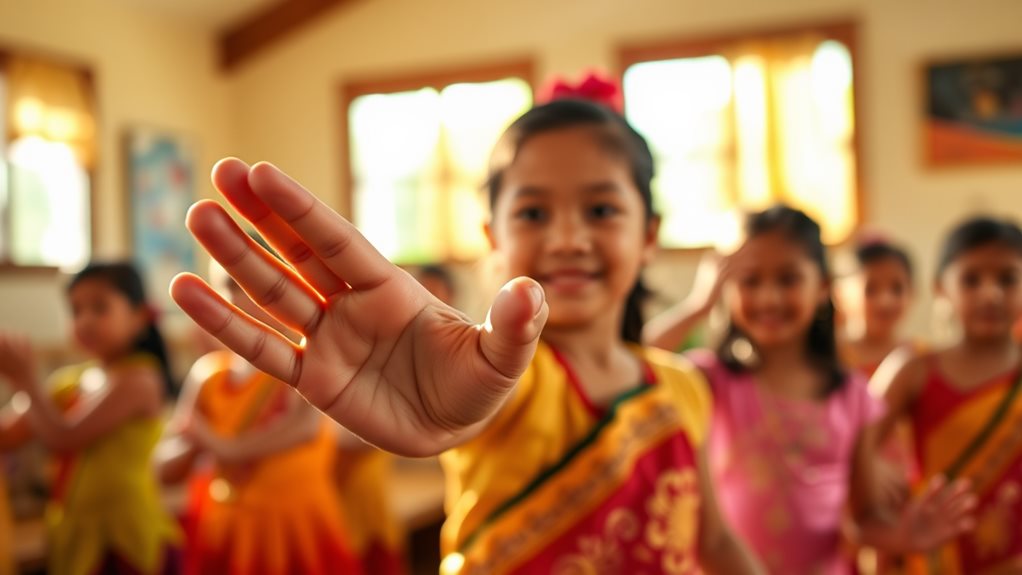Integrating Filipino Dance into Education
Filipino dance can be effectively taught in educational settings to promote cultural heritage. Structured curricula are essential, combining traditional and modern techniques to provide a comprehensive understanding of Filipino dance. Teacher training is crucial, equipping educators with diverse pedagogical strategies to ensure they can effectively teach Filipino dance.
Community Involvement is Vital
Community involvement is key to strengthening Filipino dance education. Involving local communities in dance performances and workshops fosters engagement and showcases the beauty of Filipino dance. This approach helps to build relationships between schools and communities, promoting a deeper appreciation for cultural heritage.
Overcoming Challenges
Declining interest in Filipino dance is a significant challenge. Innovative teaching methods, such as incorporating technology, can help to revitalize interest and make Filipino dance more appealing to students. Developing interactive online resources and virtual dance classes can also help to increase accessibility and engagement.
Preserving Cultural Heritage
The preservation of Filipino dance as a vital aspect of cultural heritage requires a multifaceted approach**. By integrating Filipino dance into education, providing robust teacher training**, and involving local communities, we can ensure the continued appreciation and preservation of this important cultural tradition.
The Importance of Filipino Dance

Filipino dance is a vital part of the nation's heritage and identity. The Philippines' rich dance history reflects its complex cultural past, showcasing influences from indigenous movements and various cultures that have interacted with the country. For example, the Cariñosa dance from the Spanish colonial period highlights the nation's history.
Learning Filipino dance is more than just memorizing steps. It involves understanding the cultural context and appreciating the intricate details that tell stories of the past and the lives of Filipino people. By engaging with this intangible cultural heritage, individuals can develop a sense of national identity and pride.
Filipino dance promotes cross-cultural understanding and empathy****. Understanding these dances allows people to engage with other cultures and appreciate their unique histories and traditions. This fosters global citizenship and a deeper connection with the community.
Participating in Filipino dance has numerous benefits. It demands physical skill, developing agility, coordination, and rhythm.
Integrating Dance Into Curricula
Effective Integration of Filipino Dance into Educational Curricula
Effective integration of Filipino dance into educational curricula requires a well-structured approach. This approach must encompass curriculum design, pedagogical strategies, and the strategic use of technology. A well-structured course design is crucial for curriculum integration. This design should focus on content, form, atmosphere, and student interaction, adhering to established standards to ensure consistent learning outcomes.
Dance Pedagogy and Student Engagement
Dance pedagogy should prioritize personalized teaching and engaging activities to enhance learning efficiency. Incorporating Philippine folk dances into physical education programs presents a unique opportunity for cultural heritage preservation. However, limited class time and complex routines can hinder student engagement. To overcome this, teachers can break down complex routines into simpler steps and provide individualized feedback to students.
Strategic Use of Technology
Technology offers valuable tools for curriculum integration. Platforms like YouTube and learning management systems can enhance accessibility and engagement. However, technology should be used strategically to avoid over-reliance. The Technology Acceptance Model highlights the importance of perceived ease of use and usefulness in driving technology adoption. Teachers can create video tutorials and online discussion forums to supplement traditional teaching methods.
Curriculum Design and Technology Integration
| Curriculum Aspect | Strategy | Outcome |
|---|---|---|
| Curriculum Design | Structured courses, standardized learning | Consistent learning, improved understanding |
| Dance Pedagogy | Personalized teaching, engaging activities | Increased student engagement, improved skills |
| Technology Integration | Strategic use of online platforms | Enhanced accessibility, improved knowledge |
Student Interest and School Engagement
Student interest in Filipino dance shows little variance across demographics. However, school engagement differs significantly across institutions. A strong positive correlation exists between individual interest and school-level engagement, underlining the crucial role of both in cultural heritage preservation. This highlights the importance of teachers and schools promoting cultural heritage and encouraging student participation.
The Educators' Crucial Role

Educators Play a Crucial Role in Preserving the Philippines' Cultural Heritage****
The preservation of the Philippines' rich cultural heritage relies heavily on educators' ability to effectively teach traditional Filipino dances. As an educator, your responsibility isn't only to teach the steps and movements but also to convey the historical and social significance of these dances. This task requires understanding educator responsibilities that go beyond mere instruction.
Challenges in Teaching Traditional Filipino Dances
Teaching traditional Filipino dances can be complex, demanding extra time and effort. Additionally, modern influences and students' preference for contemporary styles often compete for their attention. Simply incorporating these dances into the curriculum isn't enough; educators need innovative strategies to engage students.
Leveraging Technology to Enhance Learning
Leveraging technology, such as YouTube and Facebook, offers opportunities to enhance the learning experience. For example, educators can use online tutorials to demonstrate dance routines, share videos of traditional Filipino dances, or create online communities to discuss the cultural significance of these dances.
However, educators must carefully manage technology use to avoid distractions and ensure it supports the learning process.
Fostering Student Engagement and Appreciation
Student engagement is crucial to successful cultural transmission. Research shows that individual interest strongly correlates with school engagement, and technology can significantly boost this engagement.
To foster a genuine love for traditional Filipino dances, educators must highlight their inherent beauty and value, counteracting the allure of more contemporary styles.
Professional Development for Effective Teaching
Ongoing professional development is essential for educators to hone their skills and adapt their teaching methods for maximum impact. This includes staying updated on best practices in teaching traditional Filipino dances, attending workshops and seminars, and networking with other educators to share effective strategies.
Community Centers' Contributions
Community centers play a vital role in preserving Filipino cultural heritage through dance. Their contributions involve offering educational programs that teach various dance forms, including those influenced by Spanish and indigenous cultures.
These programs cater to diverse age groups and skill levels, allowing for intergenerational participation and knowledge transmission.
Their approach to cultural preservation includes organizing performances and events. Community centers organize cultural performances showcasing a full repertoire of Philippine dances and music.
These events often incorporate live Rondalla and Kulintang music, serving as platforms for cultural exchange between community members and artists.
Community involvement is essential to their mission. Community centers actively engage with local communities through interactive workshops and events.
They build connections with other organizations to broaden their reach and impact, encouraging participation not only as audience members but also as active learners and performers.
This involvement is vital to the sustainability of their programs.
Community centers function as non-profit organizations, relying on external support. They rely on donations, volunteers, and grants to support their mission.
These centers have also adapted to the digital age, extending their reach through online programs.
Their commitment to fostering cultural diversity and understanding is evident in their diverse programming and community outreach initiatives.
Challenges and Future Steps

Challenges in Preserving Filipino Dance
Filipino dance faces significant challenges in its transmission to younger generations. Student engagement is dwindling due to the appeal of modern dance styles and the perceived complexity of traditional routines. Moreover, the limited exposure of Filipino dance within school curricula exacerbates this issue.
Addressing the Challenges
To overcome these challenges, improved teacher training and curriculum development are crucial. Integrating Filipino dance into physical education programs and other subjects can raise its profile and make it more appealing. Incorporating technology and interactive elements can boost student engagement.
Key Areas Needing Attention
The following table highlights the key areas that require attention:
| Challenge | Solution |
|---|---|
| Declining Student Interest | Diversify teaching methods; incorporate technology |
| Curricular Limitations | Develop richer, more comprehensive curriculum |
| Lack of Teacher Training | Provide ongoing professional development |
| Limited Visibility | Integrate dance into school events |
| Rapid Societal Change | Emphasize cultural relevance and value |
Ensuring Cultural Preservation
Effective cultural preservation requires a multifaceted approach. Investing in teacher training, curriculum reform, and innovative teaching strategies is essential. By fostering student engagement and emphasizing the importance of cultural heritage, Filipino dance can remain a vibrant and integral part of the nation's identity.
Questions and Answers
What Are Some Common Filipino Dance Styles?
Filipino dance styles showcase cultural diversity and regional heritage.
Pandanggo sa Ilaw, a traditional dance from Lubang Island, involves balancing three oil lamps on the head and hands while performing intricate footwork. This dance style highlights the Filipino's skill and grace. In contrast, Tinikling, a popular folk dance from the Visayas region, involves tapping bamboo poles on the ground and dancing in between them. This dance style showcases the Filipino's agility and rhythm. These dances exemplify the rich cultural heritage of the Philippines.
How Can I Find a Filipino Dance Class Near Me?
Find Filipino dance classes near you by exploring local options and online resources.
Check local schools, community centers, and cultural organizations in your area that offer Filipino dance instruction. These institutions often provide classes or workshops taught by experienced instructors.
Search online for Filipino dance schools or studios that specialize in teaching traditional dances like Tinikling, Rigodon, or Pangalay. You can also look for online platforms that offer virtual classes or tutorials.
Verify the credentials and experience of the instructors or schools you're interested in to ensure you're learning from qualified teachers.
Are There Any Age Restrictions for Dance Classes?
There are no age restrictions for dance classes. Dance programs cater to diverse age groups, offering age-appropriate instruction and ensuring accessibility for all. For example, some dance studios offer classes specifically designed for children as young as three years old, while others provide classes tailored to seniors or adults.
What Are the Costs Associated With These Classes?
Tuition fees vary widely due to several factors. Equipment costs are a significant expense, as programs may require specialized gear or machinery. For instance, a culinary class might need professional-grade kitchen appliances, while a photography course might require high-end cameras and lighting equipment. Venue expenses also impact overall costs, as programs may be held in rented spaces or require specific facilities. Additionally, instructor salaries are a major consideration, as experienced instructors often command higher rates. When budgeting, it's essential to consider these factors to get an accurate estimate of the total program cost.
What Benefits Do Children Gain From Learning These Dances?
Learning cultural dances brings numerous benefits to children.
Cultural appreciation is one of the significant advantages, as it allows children to understand and respect diverse traditions and customs. For instance, learning traditional African dances helps children appreciate the rich cultural heritage of African communities.
Physical fitness is another benefit, as these dances require physical movement, which improves overall health and well-being. Improved coordination results from the repetitive movements involved in dances like ballet or tap dancing. Teamwork is also developed, as many cultural dances require children to work together to perform intricate steps and formations.
Self-expression is also enhanced, as children can convey emotions and ideas through movement. Furthermore, learning cultural dances helps children develop emotional intelligence, as they learn to recognize and manage their emotions. Creativity is also fostered, as children experiment with different dance styles and movements.